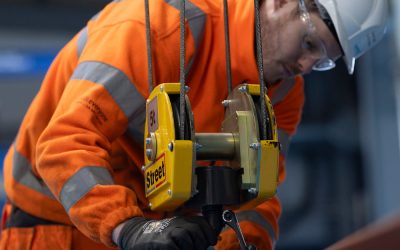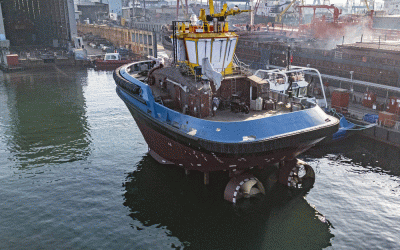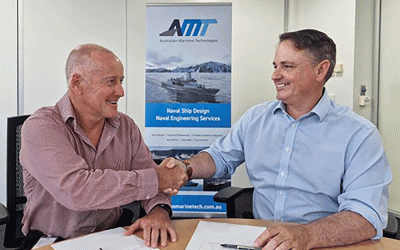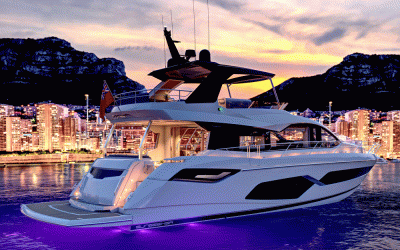DDD Manufaktura’s Portless Catamaran built to party hard
The inflatable Portless Catamaran may look like serious fun, but it’s not at all like putting a bouncy castle on the water. According to Tamás Giricz of Hungary-based DDD Manufaktura, the assumption that the dual-deck boat is just a ‘cheap toy’ is probably the biggest challenge he’s had to overcome – but he’s philosophical about it. “All innovative technology has to overcome traditional, established ideas,” he says. However, seeing the boat in action has changed minds. “We tested this out on Lake Balaton and, before the season ended, we had sold out of our first production run,” he adds.
In contrast to traditional ‘beam construction’ inflatables, which tend to have rounded surfaces, drop-stitch technology uses low-stretch aramid fibres to hold the top and bottom surfaces equidistant from each other. Thousands of fine strands (the ‘drop stitches’) per square inch are positioned to distribute load, creating a rigid, slab-like structure when inflated.
Once this drop-stitch core is completed, heat is used to fuse these tough, woven fibres to layers of reinforced PVC, adding durability. “It’s not easy to damage under normal use, not even intentionally,” Giricz says. This construction method also allows for far higher internal pressure: the catamaran has a constant internal pressure of 5psi, so, if a collision occurs, the hull will not be damaged. While the initial production runs were guaranteed for two years, DDD is about to raise that to five years, such is the company’s confidence in the inflatable’s resilience.
The stability of the design means that even the standard six-person, 4.5m version has a 9m2 main deck with a 3m2 top canopy, accessed by steps in the sidewall. The canopy can take a 160kg load: just enough to accommodate two or three passengers, all while requiring “no extra stiffening”, Giricz says. The eight-person, 6m version of the Portless Catamaran, branded the ‘Deluxe S’ line, is 30-40% bigger all round, and has a ‘ceiling’ height of 2m across the covered element of the main deck. It weighs in at 350kg but breaks down into smaller, zip-together packages, so splitting transport across a couple of cars might be an option.
The 4.5m version comes with a 100W solar array, usually paired with a 1.3kWh battery and a 1kW ePropulsion Spirit 1.0-Plus electric outboard. The 6m Deluxe S can carry a four-piece, 200W solar panel installation and a pair of 3kW electric outboards, with a maximum battery capacity of 16.3kWh – enough to grant this version of the boat a speed of 4knots.
The endurance of these catamarans depends a lot on wind and current speed, says Giricz, and obviously this requires some careful thought. However, he tells Ship & Boat International, the large battery pack allows the vessel to stay on the water for 10-13 hours at a respectable 3.2knots, and the solar panels on the roof could keep the batteries topped up “for as long as the sun is shining”. So, while they’re not particularly designed with distance travel in mind, the Portless Catamarans could still be an affordable, quirky way to experience inland waters and lakes.




